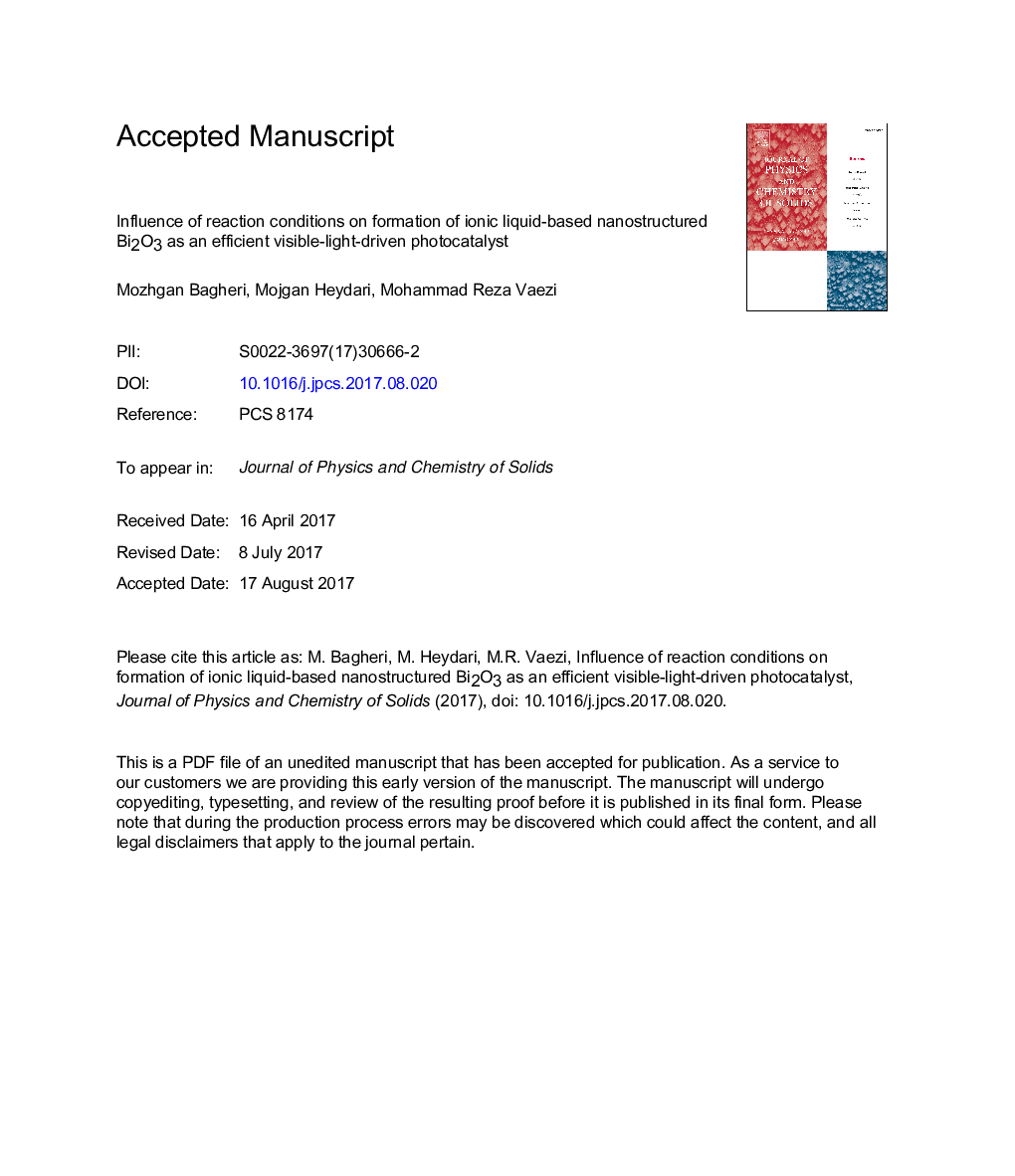| Article ID | Journal | Published Year | Pages | File Type |
|---|---|---|---|---|
| 5447255 | Journal of Physics and Chemistry of Solids | 2018 | 22 Pages |
Abstract
In this study, nanostructured bismuth oxide was synthesized based on the chemical reaction of bismuth nitrate and NaOH in the ionic liquid 1-butyl-3-methylimidazolium chloride ([C4mim]Cl) under ultrasonic irradiation. The effect of sodium hydroxide with a different molar ratio of NaOH to bismuth in the range of 3-10 was investigated. The results of fourier-transform infrared spectroscopy (FT-IR) and X-ray powder diffraction (XRD) showed that NaOH has a critical role in the formation of pure α-Bi2O3. So, at high concentrations of NaOH (NaOH:Bi â¥Â 7.5), the chloride anion from the ionic liquid cannot be entered into the crystalline structure of bismuth oxide, which resulted in the formation of pure bismuth oxide, while at lower concentrations of NaOH (NaOH:Bi â¤Â 5), Bi3O4Cl was formed with a layered structure. The XRD results revealed that the synthesized α-Bi2O3 has a monoclinic structure and scanning electron microscopy (SEM) images showed that the sample consists of needle like particles with an average thickness of 50 nm. The ionic liquid has an important role in the prevention of an agglomeration of particles in the Bi2O3 sample. The photocatalytic activity of the synthesized Bi2O3 was investigated to study the degradation of malachite green dye as a model pollutant under visible light. The effects of various parameters such as the pH, concentration of the dye, and the catalyst on the degradation of malachite green were also investigated.
Related Topics
Physical Sciences and Engineering
Materials Science
Electronic, Optical and Magnetic Materials
Authors
Mozhgan Bagheri, Mojgan Heydari, Mohammad Reza Vaezi,
